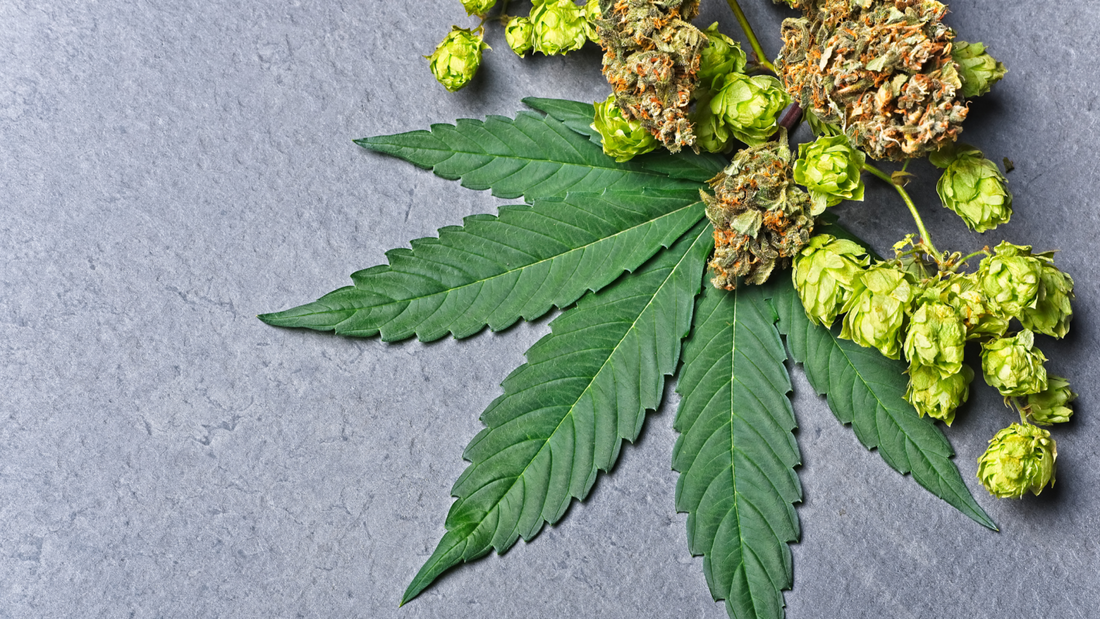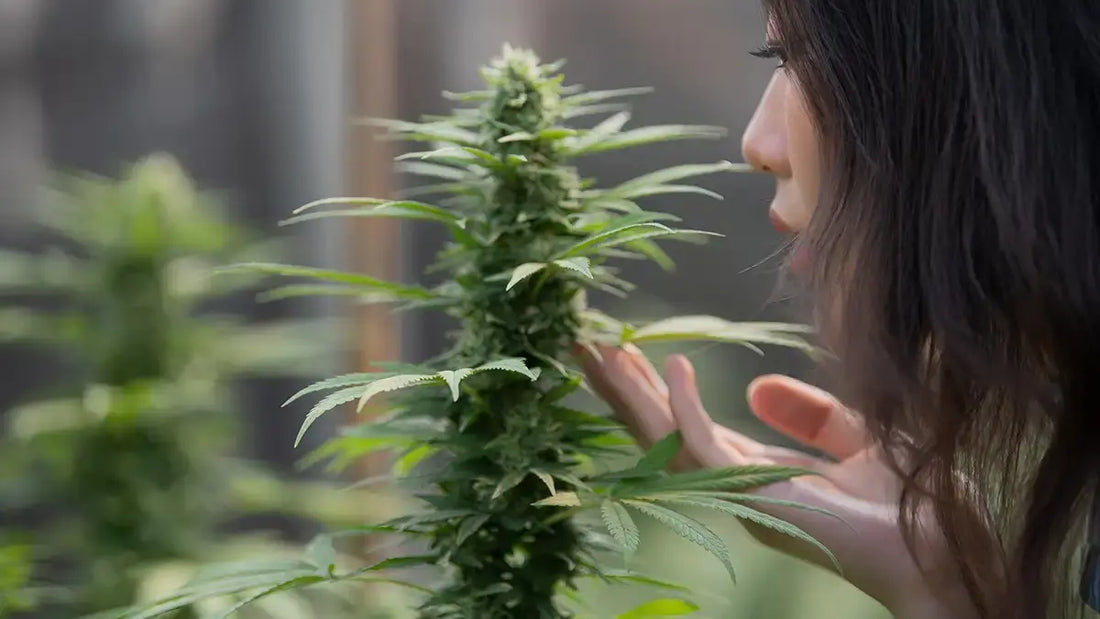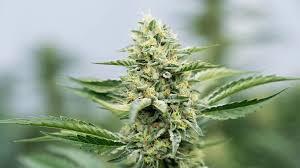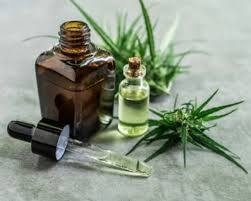News
Why UK Wellness Brands Are Switching to Natural Terpenes Over Synthetic Flavours
This article details the growing trend of UK wellness brands switching from synthetic terpenes to natural ones. It explains that natural terpenes, extracted directly from plants like cannabis, citrus, and lavender, offer superior benefits over their synthetic, lab-made counterparts. The key drivers for this shift are: Consumer Demand: A strong preference for clean-label, transparent, and natural ingredients. Enhanced Efficacy: Natural terpenes contribute to the "entourage effect," working synergistically with other compounds (like CBD) for greater therapeutic benefits in areas like anxiety relief, pain reduction, and skincare. Sustainability: Natural terpenes are biodegradable and often sourced through ethical, eco-friendly practices, aligning with modern environmental values. Scientific Backing: Studies show natural terpenes have better bioavailability and a safer profile than synthetics, which can contain harmful impurities. The article concludes that despite challenges like higher cost and regulatory compliance, the future of the UK wellness industry is firmly rooted in natural terpenes due to their proven effectiveness and alignment with consumer values.
Learn moreWhat Are Cannabis Terpenes? A Complete Guide for UK Buyers in 2025
This comprehensive guide explains that terpenes are aromatic compounds found in cannabis and many other plants that create distinct scents and flavors. More importantly, they work synergistically with cannabinoids like CBD and THC in what's known as the "entourage effect," significantly influencing a strain's effects—from promoting relaxation (myrcene) and uplifting mood (limonene) to enhancing focus (pinene). For UK buyers in 2025, the article details the legal status (terpene isolates are legal if THC <0.2%), what to look for when buying (e.g., COAs, glass packaging), and how extraction methods impact quality. It concludes that understanding terpenes is key to choosing the right cannabis or CBD product for specific needs, whether for wellness, medical, or recreational purposes.
Learn moreThe Science Behind Terpenes: Research Insights from German Universities
German universities are at the forefront of terpene research, uncovering their vast potential in medicine, agriculture, and sustainable technology. This blog explores key findings from leading institutions like the University of Bonn, Heidelberg University, and the Technical University of Munich (TUM). Key Research Areas & Findings: Anti-Inflammatory Effects β-Caryophyllene (found in black pepper & cannabis) activates CB2 receptors, reducing inflammation without psychoactive effects (University of Bonn). Linalool (lavender) inhibits neuroinflammation, suggesting benefits for Alzheimer’s and MS (Heidelberg University). Neurological Benefits Myrcene (hops, cannabis) enhances GABA activity, aiding sleep and anxiety (TUM). Limonene (citrus) boosts serotonin/dopamine, acting as a natural antidepressant (University of Bonn). α-Pinene (pine needles) may improve memory by protecting against neurodegeneration (Charité Berlin). Industrial & Environmental Applications Biofuels: Engineered yeast produces limonene for sustainable fuel (TUM). Natural Pesticides: Terpenes repel pests while attracting pollinators (Max Planck Institute). Medical Cannabis & the Entourage Effect German studies confirm terpenes enhance cannabinoid effects (e.g., myrcene + CBD for pain relief). Research supports full-spectrum extracts over isolated compounds. Future Directions: Personalized Medicine: Tailoring terpene profiles for individual health needs. Synthetic Biology: Lab-grown terpenes for scalable, eco-friendly production. AI-Driven Discovery: Predicting new terpene applications in drug development. Where to Access Research: University Repositories (e.g., Heidelberg’s HeiDOK, TUM’s Publications). Open-Access Journals (PLOS ONE, Frontiers). Databases (PubMed, ResearchGate). Germany’s blend of academic rigor and industry collaboration ensures it remains a global leader in unlocking terpenes’ potential—from next-gen therapeutics to green alternatives for plastics and energy. References: University of Bonn (2020). Plant Physiology. Heidelberg University (2023). Journal of Neurochemistry. TUM (2021). Nature Communications. DFG & BMBF funding reports. For more, visit ResearchGate or PubMed Central.
Learn moreSustainable Cultivation of Terpene-Rich Cannabis in Germany
Sustainable Cultivation of Terpene-Rich Cannabis in Germany Key Themes: Why Sustainability Matters Conventional cannabis farming is resource-intensive (high energy/water use, chemical pollution). Germany’s legalization (2024) prioritizes eco-friendly practices to reduce carbon footprints and meet EU Green Deal goals. Consumers prefer sustainable products, with 60% willing to pay a premium. Organic Growing Methods Soil Health: Living soil with microbes enhances terpene production vs. synthetic fertilizers. Pest Control: Beneficial insects (ladybugs), companion planting (basil, marigolds), and organic sprays (neem oil) replace chemicals. Maximizing Terpene Retention Harvest Timing: Trichome maturity (60–70% cloudy) and pistil color indicate peak terpene levels. Drying/Curing: Slow drying (16–20°C, 55% RH) and curing in glass jars preserve terpenes. German Standards & Certifications Demeter/Bio-Siegel/EU Organic: Ensure pesticide-free, biodynamic cultivation. Lab testing (GC-MS/HPLC) verifies terpene profiles and purity. Future of Eco-Friendly Cannabis in Europe Shift to sun-grown/outdoor cultivation, renewable energy (solar/LEDs), and biodegradable packaging (hemp plastics). Policies like Germany’s Cannabis Act (CanG) may mandate sustainability certifications. Closing Thoughts Sustainable practices yield higher terpene content and market competitiveness. Germany is poised to lead Europe in eco-conscious cannabis production. Key Takeaways: ✔ Terpenes thrive in organic, low-stress environments.✔ Certifications (Demeter, Bio-Siegel) ensure quality and sustainability.✔ Consumer demand and regulations drive the industry toward green practices. References: Peer-reviewed studies on energy use, terpene science, and EU/German policy documents.
Learn moreIdentifying High-Quality Terpenes in German Cannabis Dispensaries
Germany’s medical cannabis market is growing, and terpenes—the aromatic compounds responsible for cannabis’s flavors and therapeutic effects—play a crucial role in product quality. This guide outlines how to identify premium terpenes in German dispensaries, covering regulations, lab testing, storage, and recommended brands. Key Takeaways: German Dispensary Landscape Medical cannabis is sold through licensed pharmacies (requiring a prescription). Products must meet GMP standards, but terpene quality varies due to storage and sourcing. Challenges include limited strain variety, high costs, and inconsistent terpene preservation. Indicators of Quality Terpenes Aroma & Appearance: Strong, complex scents and visible trichomes suggest freshness. Certificate of Analysis (COA): Ensures purity, potency, and safety (look for terpene percentages, contaminant testing). Lab Testing Standards: German labs use GC-MS, HPLC, and ICP-MS to verify compliance with EU and DAB pharmacopoeial standards. Storage & Preservation Terpenes degrade due to light, heat, oxygen, and humidity. Best practices: UV-protected, airtight containers (amber glass preferred). Cool, dark storage (15–21°C, 55–65% humidity). Limit oxygen exposure (vacuum sealing or nitrogen flushing). Questions to Ask Dispensaries Can you provide the terpene profile and COA? How was the cannabis grown, processed, and stored? Are terpenes naturally occurring or added later? Recommended Brands Medical-Grade: Cansativa, DEMECAN, Drapalin Pharmaceuticals. Wellness & Recreational: Sanity Group (VAAY), Storz & Bickel (vaporizers). International Suppliers: True Terpenes, Abstrax Tech (for strain-specific profiles). Next Steps Consumers: Demand transparency, lab reports, and proper storage. Industry: Advocate for standardized testing, better education, and innovative terpene-enhanced products. By prioritizing lab-tested, well-stored cannabis and choosing reputable brands, German patients can ensure they receive high-terpene, effective products. For more details, refer to the full guide and check lab reports (COAs) before purchasing. References: BfArM, European Pharmacopoeia, Eurofins, Cansativa, and leading cannabis research studies.
Learn moreExploring Terpene Synergy: The ‘Entourage Effect’ in German Cannabis
1. What Is the Entourage Effect? The entourage effect describes how cannabis compounds—cannabinoids (THC, CBD) and terpenes—work together synergistically to enhance therapeutic effects. Terpenes (aromatic compounds) modify how cannabinoids interact with the body’s endocannabinoid system, influencing pain relief, mood, and sedation. 2. Key Terpenes & Cannabinoids in German Cannabis Myrcene (sedating, anti-inflammatory) Limonene (uplifting, anti-anxiety) Pinene (alertness, memory retention) Caryophyllene (pain relief, binds to CB2 receptors) THC + Myrcene → Enhanced pain relief CBD + Limonene → Stronger anti-anxiety effects 3. Why It Matters for German Patients Medical cannabis in Germany is prescribed for chronic pain, anxiety, and insomnia. Terpene profiles help tailor treatment (e.g., myrcene-dominant strains for sleep, limonene for mood). Full-spectrum products (with terpenes) are often more effective than isolates. 4. How to Choose the Right Product Read lab reports for terpene and cannabinoid content. Match terpenes to needs (e.g., linalool for anxiety, caryophyllene for inflammation). Prefer full-spectrum extracts over isolates for the entourage effect. 5. Future Research & Developments Ongoing European studies explore personalized cannabis medicine. Germany’s regulated market ensures lab-tested, high-quality products. 6. Key Takeaways ✅ Terpenes shape cannabis effects beyond just aroma.✅ German medical strains have unique therapeutic profiles.✅ Full-spectrum products maximize benefits via synergy.✅ Patients should consider terpenes when selecting strains. For optimal results, German patients should seek lab-verified, terpene-rich cannabis tailored to their condition.
Learn moreTerpene Profiles of Popular German-Bred Cannabis Strains
Germany has become a hub for high-quality cannabis breeding, focusing on medical efficacy, unique terpenes, and innovative cultivation. This guide explored four standout German-bred strains, highlighting their terpene profiles, effects, and ideal uses: Classic German Hybrid Terpenes: Earthy (myrcene), citrus (limonene), pine (pinene). Effects: Balanced relaxation & focus. Best for: Daytime productivity or evening unwinding. High-CBD Strain #2 Terpenes: Myrcene (sedating), linalool (calming), limonene (mood-boosting). Effects: Non-intoxicating relief for pain, anxiety, and inflammation. Best for: Medical users seeking therapeutic benefits without a strong high. Energizing Sativa #3 Terpenes: Limonene (uplifting), pinene (focus-enhancing), terpinolene (exotic spice). Effects: Cerebral stimulation, creativity, and social energy. Best for: Daytime activities, artistic projects, or combating fatigue. Relaxing Indica #4 Terpenes: Myrcene (sedating), caryophyllene (spicy, pain-relieving). Effects: Deep body relaxation and sleep aid. Best for: Nighttime use, stress relief, or chronic pain management. Key Insights German cannabis breeding prioritizes terpene-rich strains for tailored effects. Medical applications are a major focus, with strains designed for conditions like chronic pain, anxiety, and insomnia. Dosage matters—start low, especially with high-THC or sedating strains. Legal compliance is critical: medical use is legal with a prescription; recreational laws are evolving. For consumers and patients, German-bred strains offer precision, quality, and diverse therapeutic benefits, making them a standout choice in the global cannabis market.
Learn moreHow German Laws Shape the Terpene Profiles You Can Access
Germany’s cannabis regulations have a significant impact on the terpene profiles available to consumers, influencing everything from strain diversity to product quality. Below is a concise breakdown of key takeaways from the full analysis. 1. History of Cannabis Regulation in Germany Pre-20th Century: Hemp was cultivated for industrial use, but psychoactive cannabis was not widespread. 1929-1971: Increasing restrictions, culminating in the Narcotics Act (BtMG), which criminalized cannabis. 2017: Medical cannabis legalized, allowing imports and domestic cultivation under strict licensing. 2024: Partial decriminalization (25g possession, 3 home plants, social clubs). Impact on Terpenes: Early prohibition limited strain diversity, favoring high-THC black-market cannabis over terpene-rich varieties. Medical legalization introduced standardized, lab-tested strains but with limited genetic diversity. 2. Import & Production Rules Strict EU-GMP standards govern medical cannabis, favoring high-THC, high-yield strains. Irradiation requirements (to kill microbes) degrade volatile terpenes like myrcene and limonene. Domestic cultivation licenses are limited, reducing boutique, terpene-focused strains. Common Terpenes in German Market: Myrcene, pinene, caryophyllene (stable under irradiation). Rare Terpenes: Terpinolene, humulene, ocimene (fragile, often lost in processing). 3. Quality Control & Testing Mandatory lab testing ensures safety but prioritizes THC/CBD over terpene preservation. Key Certifications: ISO 17025 (lab accuracy) EU-GMP (pharmaceutical-grade production) DAkkS accreditation (German compliance) Why Lab Results Matter: Ensures accurate terpene profiles for medical efficacy. Detects contaminants (pesticides, solvents). 4. Medical vs. Recreational Terpene Access Factor Medical Cannabis Recreational/Wellness Products Regulation Strict (EU-GMP, prescription-only) Looser (THC <0.2%, no prescription) Terpene Diversity Limited (approved strains only) Wider (but less reliable testing) Testing Full terpene & contaminant screening Often untested or mislabeled Possession Limits Prescription-dependent (~100g/month) 25g (recreational, from 2024) 5. Future Trends & Policy Changes Potential Relaxation of Irradiation Rules → Better terpene preservation. More Domestic Cultivation Licenses → Increased strain diversity. Terpene-Specific Research → Medical recognition of entourage effect. Recreational Market Expansion → More craft strains in social clubs. 6. Key Resources BfArM (Cannabis Regulation) EMCDDA (EU Drug Policies) German Hemp Association Final Thoughts German laws heavily influence which terpenes are available—strict medical regulations ensure safety but limit diversity, while the upcoming recreational market may introduce more variety. For consumers, lab-tested products and strain awareness are crucial for accessing desired terpene effects.
Learn moreTop 5 Terpenes to Look For in German Medical Cannabis
Germany’s medical cannabis program offers patients access to high-quality, terpene-rich strains for various conditions. Understanding terpenes—the aromatic compounds that influence cannabis’s effects—can help patients choose the best strain for their needs. 1. Myrcene Effects: Sedation, relaxation, pain relief Best For: Insomnia, chronic pain, muscle tension German Strains: Granddaddy Purple, Northern Lights Bonus: Enhances THC absorption, increasing potency. 2. Limonene Effects: Mood elevation, stress relief, energy boost Best For: Anxiety, depression, fatigue German Strains: Super Lemon Haze, Jack Herer Bonus: Also found in citrus fruits—may enhance effects when consumed together. 3. Pinene Effects: Alertness, memory retention, anti-inflammatory Best For: ADHD, focus, respiratory conditions German Strains: Blue Dream, Dutch Treat Bonus: May counteract THC-induced short-term memory loss. 4. Caryophyllene Effects: Anti-inflammatory, pain relief, stress reduction Best For: Arthritis, IBD, anxiety German Strains: Girl Scout Cookies, OG Kush Bonus: The only terpene that directly activates CB2 receptors (like CBD). 5. Linalool Effects: Calming, sedative, anti-anxiety Best For: Insomnia, PTSD, chronic stress German Strains: Lavender Kush, Do-Si-Dos Bonus: Also found in lavender—great for aromatherapy. Final Recommendation: Chronic Pain? → Myrcene + Caryophyllene strains Anxiety/Depression? → Limonene + Linalool strains Insomnia? → Myrcene + Linalool strains Focus Issues? → Pinene + Limonene strains Germany’s medical cannabis market continues to evolve, with terpenes playing a crucial role in personalized treatment. Always consult a doctor for strain recommendations and dosing. For more details, check out: PubMed: Terpenes Research German Hemp Association (DHV)
Learn more










